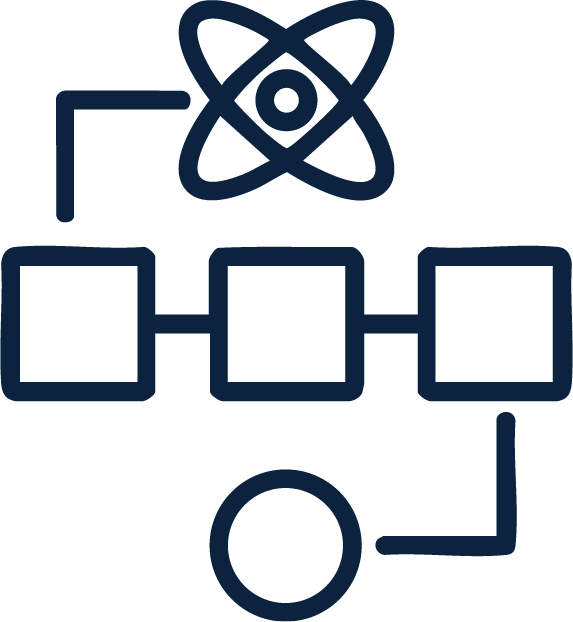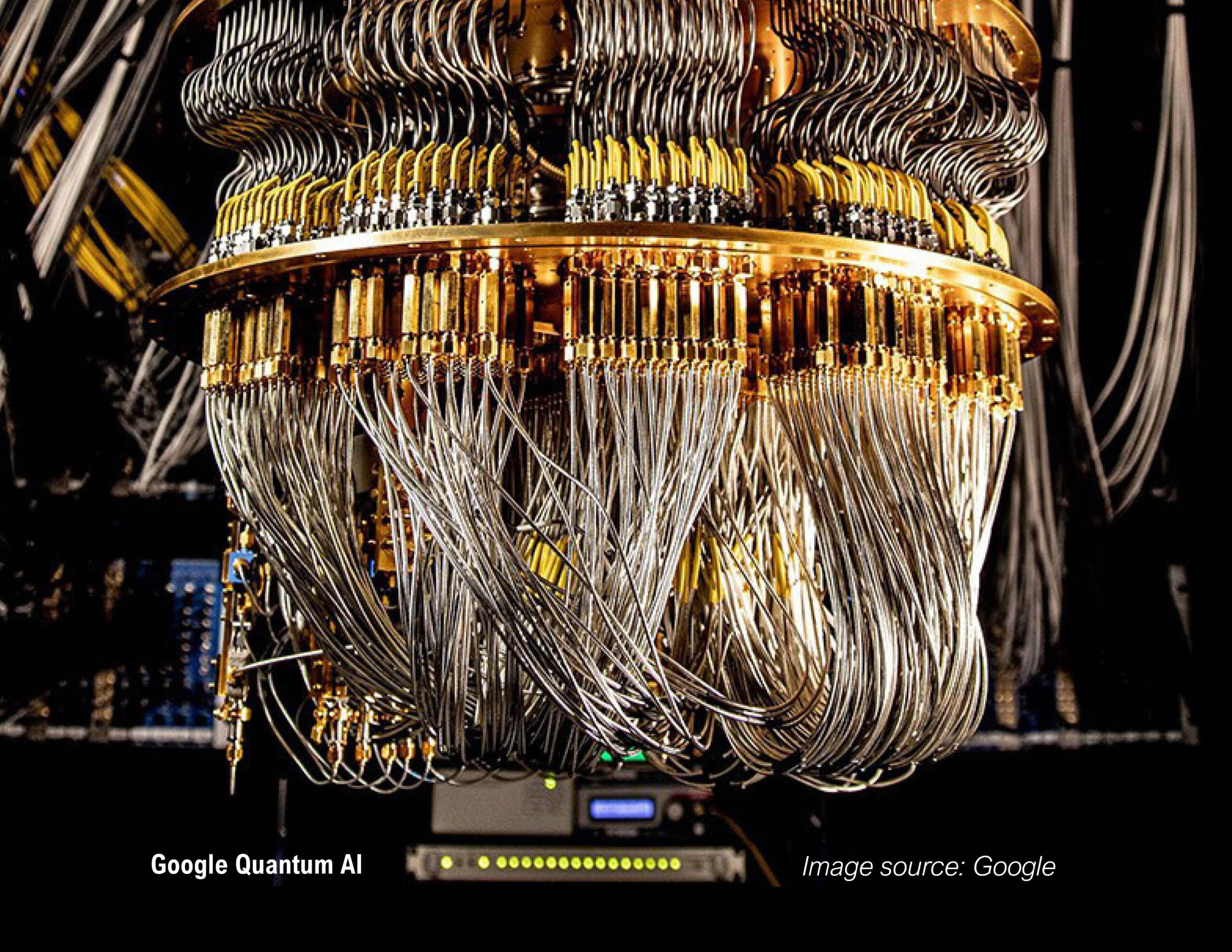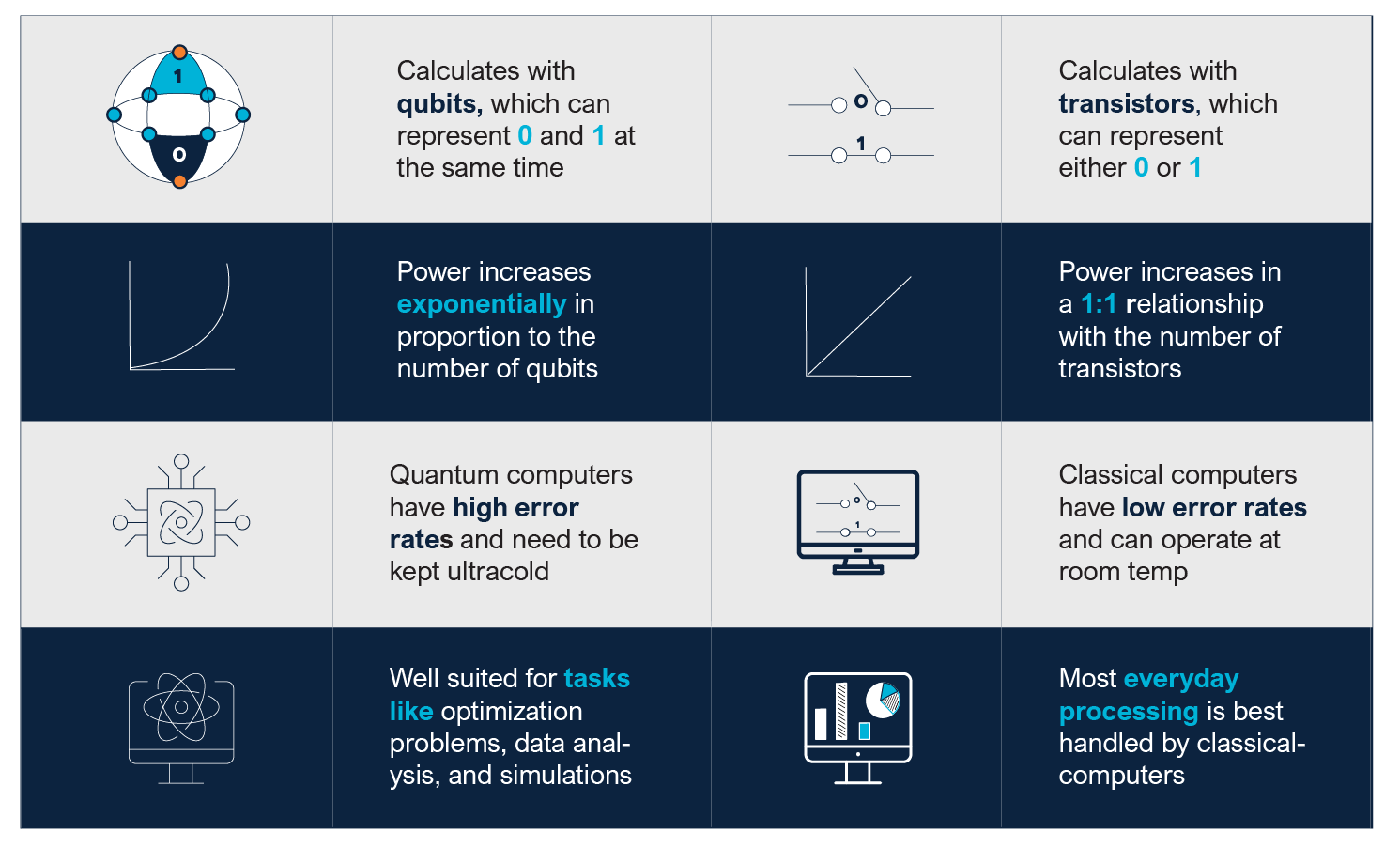Quantum Computing for Future Cities and Smart Mobility
Quantum computing holds the potential to deliver powerful solutions for future cities and smart mobility. Leveraging quantum mechanics, this technology could optimise traffic flow, enhance the use of renewable energy, and ensure the (digital) security of our infrastructure and utilities.
Discover how this emerging field is shaping sustainable and intelligent urban environments.
By Brent Boden,
May 2025
Introduction
As our world becomes increasingly urbanised and interconnected, the drive for smarter, more sustainable cities has never been stronger. Urban planners and technology leaders are searching for tools to address the complex challenges of congestion, energy management, public health, and environmental sustainability. One emerging technology with the potential to transform these domains is quantum computing.
Quantum computing differs fundamentally from the classical computing paradigm by leveraging the principles of quantum mechanics to process information. Though still in its early stages, quantum computing has already shown promise in solving certain classes of problems exponentially faster than traditional computers.
In the context of future cities and smart mobility, quantum computing may provide the necessary computational power to analyse massive datasets, optimise traffic flows, manage renewable energy grids, and secure critical infrastructure.
This white paper provides an overview of quantum computing—its background, current projects, and breakthroughs—and explores how its unique capabilities might shape the design and operation of future urban environments. We will also examine some use cases in smart mobility and detail the next steps (along with a projected timeline for deployment).
1. Background on Quantum Computing
1.1 Theory and Principles
Quantum computing relies on three key quantum mechanical properties: superposition, entanglement, and quantum interference.

Superposition
Qubits (quantum bits) can represent both 0 and 1 simultaneously, unlike classical bits that can represent only one state at a time. This parallelism dramatically increases computational possibilities.

Entanglement
Qubits can be entangled such that the state of one qubit depends on the state of another, regardless of the distance between them. Entanglement allows for the simultaneous manipulation of multiple qubits with incredible efficiency.

Quantum Interference
By carefully controlling how quantum states overlap, quantum interference can amplify correct answers and cancel out errors, increasing the accuracy of certain calculations.

1.2 Development and Early Milestones
In the 1980s and 1990s, physicists like Richard Feynman and Paul Benioff laid the theoretical foundations for quantum computing. Pioneering algorithms, such as Shor’s (for factoring large integers) and Grover’s (for database search), demonstrated the potential for exponential speedups on specific problems.
Early 2000s Initial experiments demonstrated small-scale quantum gates and circuits in academic labs, proving the feasibility of manipulating qubits.
2011–2015 Companies like D-Wave Systems introduced the first commercial quantum annealers, which specialise in solving combinatorial optimisation problems. Although different from universal quantum computers, these machines offered an early glimpse into practical quantum-based solutions.
2019 Google announced “quantum supremacy” with their 53-qubit Sycamore processor, stating it performed a computation in 200 seconds that would take a classical supercomputer an impractical amount of time.
2020s
- IBM, IonQ, Rigetti, and other firms launched cloud-accessible quantum computers, spurring increased funding from initiatives like the U.S. National Quantum Initiative and the EU’s Quantum Flagship.
- Research continued focusing on qubit fidelity, error correction, and scalability, building momentum toward more robust quantum technologies.
Late 2024 Google achieved another major leap in quantum computing, this time making significant strides toward fault-tolerant systems. The advancement centred on improving error-correction methods and demonstrating enhanced stability in larger logical qubits—pivotal steps for building truly scalable quantum machines. Such progress has far-reaching implications, potentially accelerating real-world applications in areas like smart mobility, energy management, and climate modelling, where massive computational power is critical.
Despite these achievements, quantum computing still faces challenges in error-correction overhead, qubit stability, and system scalability. Nonetheless, the ongoing investments by governments, private companies, and academic institutions underscore a shared belief that quantum computing will eventually revolutionise multiple domains, particularly those that require solving extremely complex optimisation problems, such as future city planning and smart mobility.
Quantum Computing vs Classical Computing
2. Current Projects and Breakthroughs
2.1 Leading Companies and Platforms
Below are some of the most prominent players shaping the industry’s trajectory:
IBM Quantum
Known for its 127-qubit “Eagle” processor, extensive quantum software suite, and collaboration network (the IBM Quantum Network).
Google Quantum AI
Achieved high-profile demonstrations of quantum supremacy and continues to refine superconducting qubit designs, error-correction strategies, and larger logical qubits.
D-Wave Systems
Focuses on quantum annealing for combinatorial optimisation. Collaborations include route optimisation for Volkswagen and research partnerships in material sciences.
Ionq
Specialises in trapped-ion qubits for high-fidelity operations, offering cloud-based quantum services on major platforms.
Rigetti Computing
Develops superconducting qubit systems and quantum-classical hybrid solutions accessible via multiple cloud providers.
2.2 Notable Collaborations and Research Initiatives
Beyond individual companies, a network of collaborations and research endeavours is propelling quantum computing toward real-world applications. The examples below showcase how diverse partnerships and international programs are driving innovation:
Volkswagen
The Volkswagen Group uses quantum computing for route optimisation and battery research, partnering with D-Wave and Google.
Airbus Quantum Computing Challenge
Encourages researchers to apply quantum algorithms to aerospace problems, such as optimising flight routes and aircraft design.
Quantum Internet Alliance (EU)
This alliance focuses on building a secure quantum network for critical infrastructure, an essential component of future smart cities.
Toyota’s Woven City
Investigates next-generation mobility technologies, potentially leveraging quantum computing for autonomous vehicle routing and energy management.

3. Applications in Future Cities and Smart Mobility
3.1 Optimising Traffic and Urban Mobility
Modern cities generate enormous amounts of real-time data, including GPS signals, sensor readings at intersections, mobile app data, and more. Analysing this data more efficiently can dramatically improve traffic flow.
Quantum Potential
Qubits (quantum bits) can represent both 0 and 1 simultaneously, unlike classical bits that can represent only one state at a time. This parallelism dramatically increases computational possibilities.
Example
- Volkswagen & D-Wave: During the Web Summit (2019) in Lisbon, they tested a quantum-based route-optimization pilot for public buses. Real-time traffic data was fed into a quantum annealer, simulating thousands of conditions to identify optimal routes.
- City of London: A metropolis like London could integrate quantum algorithms with existing traffic-control systems to adjust signal timing during peak hours or major events (e.g., the London Marathon).
Impact
Shorter travel times, reduced emissions, and a smoother flow of public and private vehicles. Over time, these improvements can reduce the need for additional road infrastructure, minimising costs and urban sprawl.
3.2 Advanced Urban Planning
Urban planning involves interdependent factors such as population growth, infrastructure, zoning laws, and environmental sustainability. Each proposal can have a domino effect on transportation, utilities, and resource usage.
Quantum Potential
Quantum systems can simulate multiple planning scenarios (e.g., residential vs. commercial developments, new transit lines, or mixed-use zoning) in parallel, assessing their long-term impacts on commuting times, energy consumption, and ecological footprints.
Example
- Digital Twin Cities: A city could use quantum-based optimisation to model population growth and stress-test infrastructure under various policy decisions.
- Singapore Model: Using IBM Quantum or IonQ, Singaporean planners might analyse how rezoning for mixed-use developments influences traffic patterns, energy demand, and social equity over a 10-year horizon.
Impact
More informed decisions and resource-efficient city layouts that can better accommodate population surges, large events, and environmental constraints.
3.3 Enhancing Renewable Energy Systems
As cities strive for carbon neutrality, integrating renewables like wind and solar into the grid becomes a key challenge. These intermittent sources require careful coordination across supply, storage, and distribution networks
Quantum Potential
Quantum algorithms can rapidly analyse weather forecasts, consumption data, and grid capacities to recommend when to store, distribute, or sell energy for maximum efficiency and cost-effectiveness.
Example
- ExxonMobil & IBM: Joint research on optimising energy consumption forecasts using quantum computers. A quantum algorithm can help utilities decide on battery usage or off-peak charging schedules by factoring in satellite data on solar irradiance.
- Municipal-Scale Energy Management: A city could partner with a quantum-computing provider to manage microgrids incorporating rooftop solar panels and local wind turbines, reducing energy waste and lowering costs.
Impact
Greater energy self-sufficiency, lower carbon footprints, and stabilised electricity prices.
3.4 Revolutionising Public Transport
Efficient public transport is essential for reducing congestion and emissions. However, even minor disruptions, like a stalled train, can cause systemic delays.
Quantum Potential
Quantum solutions can optimise scheduling and reroute passengers in real-time, simulating thousands of micro-disruption scenarios to minimise overall impact.
Example
- Tokyo Metro: A quantum-powered scheduling tool could reallocate trains and staff during unexpected delays, preventing cascading effects.
- Bus Network Resilience: In a sprawling network like Los Angeles, quantum solvers could identify alternative routes and adjust schedules dynamically in response to traffic or weather disruptions.
Impact
Fewer delays, reduced crowding, and a more reliable public transport experience, encouraging higher ridership and further easing congestion.
3.5 Securing Data in Smart Cities
Smart cities are interconnected at every level—from traffic sensors to healthcare databases—making them potential targets for cyberattacks.
Quantum Potential
Quantum key distribution (QKD) and post-quantum cryptography can secure city-wide communications. As large-scale quantum computers threaten classical encryption, proactive adoption of quantum-secure methods is crucial.
Example
- OpenQKD Initiative: Pilot projects across Europe test quantum-secured communication for government, finance, and energy sectors.
- Emergency Services: Police and ambulance systems could benefit from quantum-secured networks to protect sensitive data on patients, routes, or ongoing operations.
Impact
Bolstered trust in digital infrastructure, enabling deeper integration of technologies such as autonomous vehicles, e-health services, and data-driven governance.
Quantum Key Distribution (QKD) leverages principles of quantum mechanics—specifically the no-cloning theorem and uncertainty principle—to enable two parties to exchange encryption keys with provable security.
The core idea is that any attempt by an eavesdropper to intercept the quantum keys will inevitably introduce detectable anomalies (e.g., changes in error rates), alerting legitimate users to the presence of a potential breach.
Unlike classical key exchange methods, QKD is theoretically “information-theoretically secure,” meaning even a future quantum computer would not be able to decrypt past transmissions captured from a QKD-protected channel.
3.6 Climate Modelling and Sustainability
Climate change poses challenges like urban heat islands, flooding, and extreme weather. City planners need robust models to design resilient systems.
Quantum Potential
Quantum computers can handle the complex variables involved in local climate modelling, from atmospheric physics to building materials, offering finer, more accurate simulations.
Example
- Climate Labs & Quantum Firms: A collaboration between a leading climate research institute (e.g., the UK Met Office) and a quantum computing company (e.g., Rigetti) could yield hyper-localised models of heat islands.
- Flood Mitigation: Coastal cities like Miami could leverage quantum-driven simulations to anticipate storm surges, guiding investments in seawalls and flood-resistant infrastructure.
Impact
Targeted climate adaptation measures protect residents and reduce economic losses, making cities more resilient to global warming’s effects.
Benchmarking Quantum Performance
In benchmark tests using Random Circuit Sampling (RCS), Google’s Willow chip performed computations in approximately five minutes that would take the world’s fastest classical supercomputer an estimated 10 septillion years—a duration exceeding the age of the universe.
Implications for Optimization Problems
While RCS is a specific benchmark, the underlying principles demonstrate quantum computing’s potential to tackle complex optimisation problems more efficiently than classical counterparts. For instance, algorithms like the Quantum Approximate Optimization Algorithm (QAOA) are being developed to solve complex optimization problems more efficiently than classical methods.

4. Next Steps
Building on the applications discussed in Section 4, the next phase in integrating quantum computing into future cities and smart mobility involves a strategic plan for research, infrastructure, policy, talent development, and community engagement. As breakthroughs in quantum hardware and algorithms continue to emerge, city planners and technology stakeholders will need a coherent roadmap that outlines how to gradually and securely incorporate quantum solutions into existing urban systems. Below, we’ve tried to detail the primary paths for this transition, along with estimated timelines that can guide policymakers, private entities, and academic institutions in their collaborative efforts.
4.1 Ongoing Research and Pilots
Before quantum computing can be widely adopted, stakeholders must gain experience deploying and evaluating targeted use cases. Ongoing research helps refine the technology’s performance, while pilot projects demonstrate real-world feasibility in specific urban contexts.
- Short-Term (1–2 years): Launch pilot projects targeting discrete challenges—like optimising traffic signals or bus routes—to collect initial data on quantum-enabled improvements.
- Medium-Term (3–5 years): Scale quantum-based analyses for broader mobility strategies and city planning tools, leveraging insights from early pilots to refine algorithms and hardware needs.
- Long-Term (5+ years): Deploy integrated quantum solutions across multiple city systems (traffic, energy, security), supported by advanced quantum infrastructure with stable error correction and high-fidelity qubits.
4.2 Infrastructure Development
To harness quantum computing effectively, cities and organisations require the appropriate infrastructure in terms of hardware access and technological integration with existing systems. This involves not just procuring quantum hardware but also creating supportive environments—like data centres and network architectures.
Hybrid Approaches
- Short-Term: Initial solutions will likely combine classical computing and quantum servers, using whichever technology is best suited for a particular part of the problem.
- Medium-Term: As quantum hardware matures, more specialised quantum devices can be co-located in data centres or accessed through dedicated cloud platforms.
- Long-Term: Seamless integration of quantum architectures into city operations, with robust hardware ready to tackle large-scale urban challenges (e.g., real-time traffic optimisation, city-wide encryption).
Cloud-Based Access
- Short-Term: Many quantum computers are now accessible via the cloud on a pay-per-use basis, allowing cities to run small-scale experiments without significant upfront costs.
- Medium-Term: Emergence of dedicated quantum cloud services optimised for municipal data, potentially integrated with IoT sensor networks.
- Long-Term: Quantum computing resources become as ubiquitous as classical cloud computing, with multiple vendors offering specialised quantum solutions tailored to smart city needs.`
4.3 Policy and Standards
Effective policy frameworks and standards ensure that quantum computing is adopted safely, ethically, and efficiently. This involves government-led guidelines for data protection, standardisation of post-quantum cryptographic methods, and funding mechanisms that encourage responsible development.

Data Privacy and Security
- Short-Term: Regulators create initial guidelines for handling sensitive data in quantum-ready environments, focusing on select pilot programs and critical infrastructure.
- Medium-Term: Broad adoption of post-quantum cryptography for utilities, healthcare, and transportation to safeguard city operations against quantum-capable adversaries.
- Long-Term: Standardised quantum-secure communication channels across all major city systems, backed by international agreements and collaborative networks.
Public Funding & Incentives
- Short-Term: Governments offer grants under initiatives (e.g., U.S. National Quantum Initiative, EU Quantum Flagship) specifically geared toward quantum pilot projects.
- Medium-Term: Introduce tax incentives and larger funding opportunities to stimulate private-sector R&D for quantum-based solutions that address urban challenges.
- Long-Term: Establish permanent funding mechanisms and legislative frameworks supporting the widespread deployment of quantum computing in city infrastructure.

4.4 Talent and Education
Building a skilled workforce capable of developing, maintaining, and innovating around quantum solutions is critical. Talent pipelines ensure cities and organisations have the expertise to deploy quantum computing effectively in areas like transportation, energy, and city planning.
Curriculum Development
- Short-Term: Higher education institutions begin integrating quantum fundamentals into engineering, data science, and urban planning degree programs.
- Medium-Term: Creation of specialised Master’s or PhD tracks focusing on quantum computing and its potential applications in smart cities.
- Long-Term: A robust talent pipeline where professionals—from city administrators to tech company engineers—have fluency in quantum methodologies, ensuring a smooth transition to quantum-based infrastructures.
Reskilling Programs
- Short-Term: Offer workshops and continuing education courses for IT professionals to familiarise them with quantum programming frameworks like Qiskit and Cirq.
- Medium-Term: Expand training within municipal IT and transportation departments to facilitate in-house quantum solution integration.
- Long-Term: Widespread adoption of quantum computing best practices across government and private-sector teams, fostering a seamless quantum-aware environment.
4.5 Stakeholder Engagement
Stakeholder engagement, including local communities, private enterprises, and non-profit organisations, is vital to ensuring that quantum solutions are deployed in ways that benefit residents and drive inclusive growth.
Citizens and Community Groups
- Short-Term: Engage local communities in pilot initiatives through open data and workshops, emphasising the benefits and safeguards of quantum-based solutions.
- Medium-Term: Showcase success stories—like reduced congestion or improved air quality—to build public trust and encourage broader participation.
- Long-Term: Citizens become active collaborators in deploying quantum-driven services, from on-demand mobility apps to sustainable energy projects.
Private Sector
- Short-Term: Foster partnerships between quantum startups and local businesses for smaller-scale, proof-of-concept implementations.
- Medium-Term: Encourage major corporations to invest in quantum R&D for logistics, infrastructure, real estate, and other urban-focused sectors.
- Long-Term: A mature ecosystem of quantum service providers addressing various aspects of city operations and industries, ensuring a continuous pipeline of innovation and solutions.
5. Conclusion
Quantum computers hold the potential to redefine the landscape of future cities and smart mobility by solving problems currently beyond the reach of classical computing. From optimising urban infrastructure to enhancing data security, quantum computing could become a cornerstone of the next generation of sustainable and intelligent urban systems.
As the technology evolves—spurred by major investments from governments, private companies, and research institutions—its integration into smart cities will likely transform how we live, move, and interact in urban environments. The ability to process massive datasets in near-real-time, model climate scenarios with unprecedented precision, and secure critical infrastructure against cyber threats points to a future where quantum computing is central to resilient and adaptive cities.
Despite the hurdles of error correction, qubit stability, and costs, ongoing progress—highlighted by breakthroughs in error-correction methods and qubit scaling—suggests it is only a matter of time before quantum computing matures enough for large-scale implementation in urban planning and mobility. Organisations that begin investing in pilot projects, workforce development, and supportive infrastructure today will shape the cities of tomorrow.


